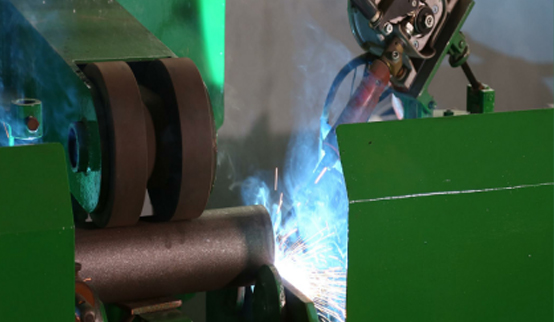 Afrikaans
Afrikaans  Albanian
Albanian  Amharic
Amharic  Arabic
Arabic  Armenian
Armenian  Azerbaijani
Azerbaijani  Basque
Basque  Belarusian
Belarusian  Bengali
Bengali  Bosnian
Bosnian  Bulgarian
Bulgarian  Catalan
Catalan  Cebuano
Cebuano  Corsican
Corsican  Croatian
Croatian  Czech
Czech  Danish
Danish  Dutch
Dutch  English
English  Esperanto
Esperanto  Estonian
Estonian  Finnish
Finnish  French
French  Frisian
Frisian  Galician
Galician  Georgian
Georgian  German
German  Greek
Greek  Gujarati
Gujarati  Haitian Creole
Haitian Creole  hausa
hausa  hawaiian
hawaiian  Hebrew
Hebrew  Hindi
Hindi  Miao
Miao  Hungarian
Hungarian  Icelandic
Icelandic  igbo
igbo  Indonesian
Indonesian  irish
irish  Italian
Italian  Japanese
Japanese  Javanese
Javanese  Kannada
Kannada  kazakh
kazakh  Khmer
Khmer  Rwandese
Rwandese  Korean
Korean  Kurdish
Kurdish  Kyrgyz
Kyrgyz  Lao
Lao  Latin
Latin  Latvian
Latvian  Lithuanian
Lithuanian  Luxembourgish
Luxembourgish  Macedonian
Macedonian  Malgashi
Malgashi  Malay
Malay  Malayalam
Malayalam  Maltese
Maltese  Maori
Maori  Marathi
Marathi  Mongolian
Mongolian  Myanmar
Myanmar  Nepali
Nepali  Norwegian
Norwegian  Norwegian
Norwegian  Occitan
Occitan  Pashto
Pashto  Persian
Persian  Polish
Polish  Portuguese
Portuguese  Punjabi
Punjabi  Romanian
Romanian  Russian
Russian  Samoan
Samoan  Scottish Gaelic
Scottish Gaelic  Serbian
Serbian  Sesotho
Sesotho  Shona
Shona  Sindhi
Sindhi  Sinhala
Sinhala  Slovak
Slovak  Slovenian
Slovenian  Somali
Somali  Spanish
Spanish  Sundanese
Sundanese  Swahili
Swahili  Swedish
Swedish  Tagalog
Tagalog  Tajik
Tajik  Tamil
Tamil  Tatar
Tatar  Telugu
Telugu  Thai
Thai  Turkish
Turkish  Turkmen
Turkmen  Ukrainian
Ukrainian  Urdu
Urdu  Uighur
Uighur  Uzbek
Uzbek  Vietnamese
Vietnamese  Welsh
Welsh  Bantu
Bantu  Yiddish
Yiddish  Yoruba
Yoruba  Zulu
Zulu Exploring Various Elements of Conveyor Systems for Enhanced Efficiency and Performance
Understanding Conveyor Components The Backbone of Material Handling Systems
In the realm of material handling and logistics, conveyor systems play a pivotal role in facilitating efficient movement, sorting, and processing of goods. Essential to these conveyors are various components that work harmoniously to ensure seamless operations. In this article, we will explore the key conveyor components, their functions, and their significance in enhancing productivity across multiple industries.
1. Belt
The conveyor belt is arguably the most recognizable part of any conveyor system. It is a continuous loop of material, typically made from rubber, fabric, or metal, that transports products from one location to another. The choice of belt material depends on the type of goods being transported and the environmental conditions. For instance, a belt designed for heavy-duty applications may use reinforced rubber to withstand abrasion, while a lighter fabric belt may suffice for less demanding tasks.
2. Rollers
Rollers are crucial for reducing friction and supporting the weight of the conveyor load. They are positioned beneath the conveyor belt along its length, allowing it to move smoothly over them. Rollers come in various types, including return rollers, impact rollers, and drive rollers, each serving a specific function. For example, drive rollers are equipped with a motor to propel the belt, while return rollers manage the belt's return journey to maintain tension and alignment.
3. Frame
The frame of a conveyor system is its structural foundation, providing support and stability. Typically made from steel or aluminum, the frame determines the conveyor’s overall strength and durability. It is designed to withstand the weight of the material being transported and other operational stresses. The frame's design also impacts the conveyor's footprint, making it essential for optimizing space in a facility.
4. Drive System
conveyor component

The drive system is responsible for powering the conveyor belt. It typically consists of an electric motor, gearbox, and a coupling mechanism. The motor generates the necessary torque to move the belt at the desired speed. Variability in speed is a critical aspect that enhances the flexibility of conveyor systems, allowing them to adapt to different operational requirements. In some advanced systems, variable frequency drives (VFDs) can be employed to control the speed and torque, further improving energy efficiency.
5. Idlers
Idlers are positioned along the length of the conveyor to support the belt and maintain its alignment. They help in managing belt tension, which is crucial for efficient operation. Properly functioning idlers prevent the belt from sagging and reduce wear and tear on the belt and other components. Depending on the application, idlers can be either fixed or adjustable to accommodate varying loads.
6. Controls and Sensors
Modern conveyor systems are often equipped with sophisticated control systems and sensors. These components enhance the automation and efficiency of the system. For example, sensors can detect the position of materials on the conveyor and adjust the speed or direction accordingly. Control panels enable operators to monitor system performance, diagnose faults, and make real-time adjustments, ensuring optimal functionality.
7. Safety Features
Safety is paramount in any industrial setting, and conveyor systems are no exception. Various safety components, such as emergency stop switches, guards, and safety sensors, are integrated into the conveyor design to protect operators and maintenance personnel. These features help mitigate risks associated with moving parts and potential hazards, ensuring compliance with industry safety standards.
Conclusion
Conveyor components are the unsung heroes of material handling, making it possible for industries to operate efficiently and effectively. Understanding the roles of each component—from belts and rollers to drive systems and safety features—is essential for optimizing conveyor performance. As technology continues to evolve, so too will the design and functionality of conveyor systems, further enhancing their role in streamlining operations across various sectors. Investing in high-quality components and regular maintenance is crucial for any business looking to harness the full potential of conveyor systems, ultimately leading to increased productivity and profitability.
-
Trusted Conveyor Solutions from Leading Conveyor Idler Roller ManufacturersNewsJun.27,2025
-
Reliable Return Idler Solutions for Efficient Belt Conveyor SystemsNewsJun.27,2025
-
Precision Conveyor Accessories for Streamlined Material HandlingNewsJun.27,2025
-
High-Quality Belt Conveyor Idler Solutions for Efficient Material HandlingNewsJun.27,2025
-
High-Performance Belt Conveyor Pulleys for Reliable Material HandlingNewsJun.27,2025
-
Enhancing Material Handling EfficiencyNewsJun.27,2025





























